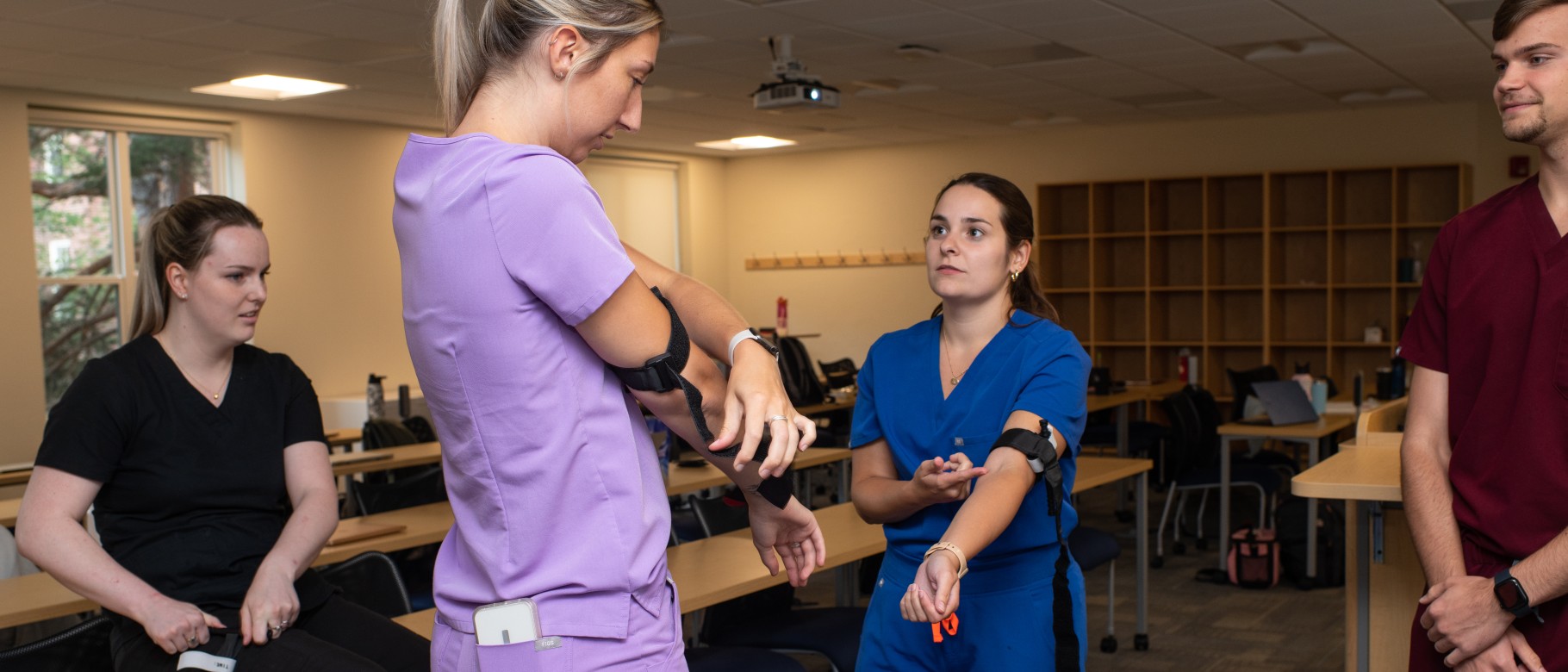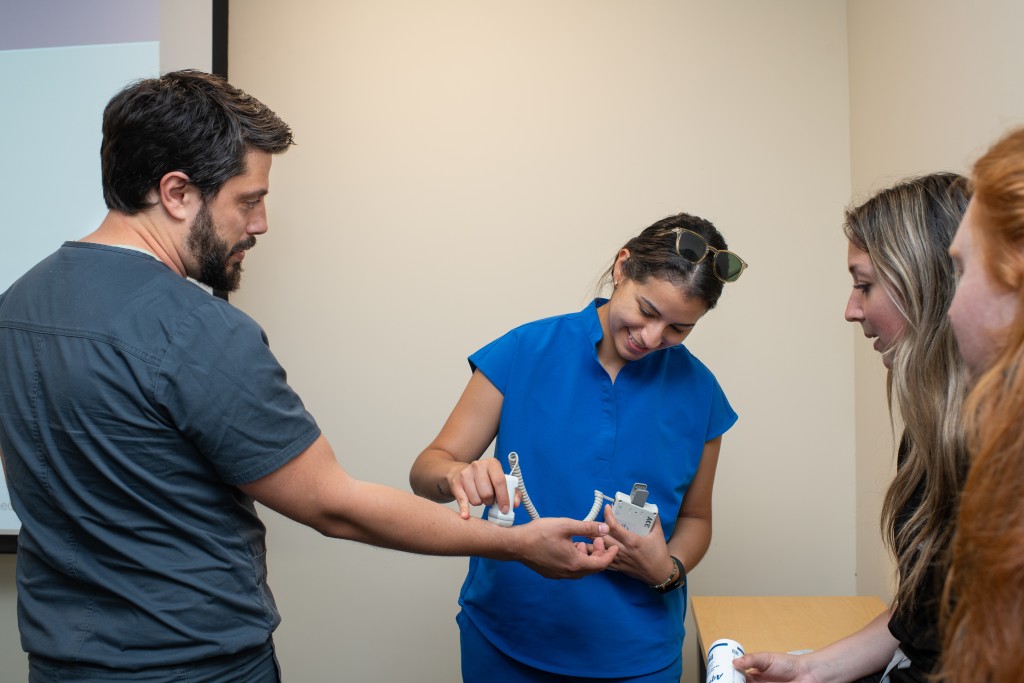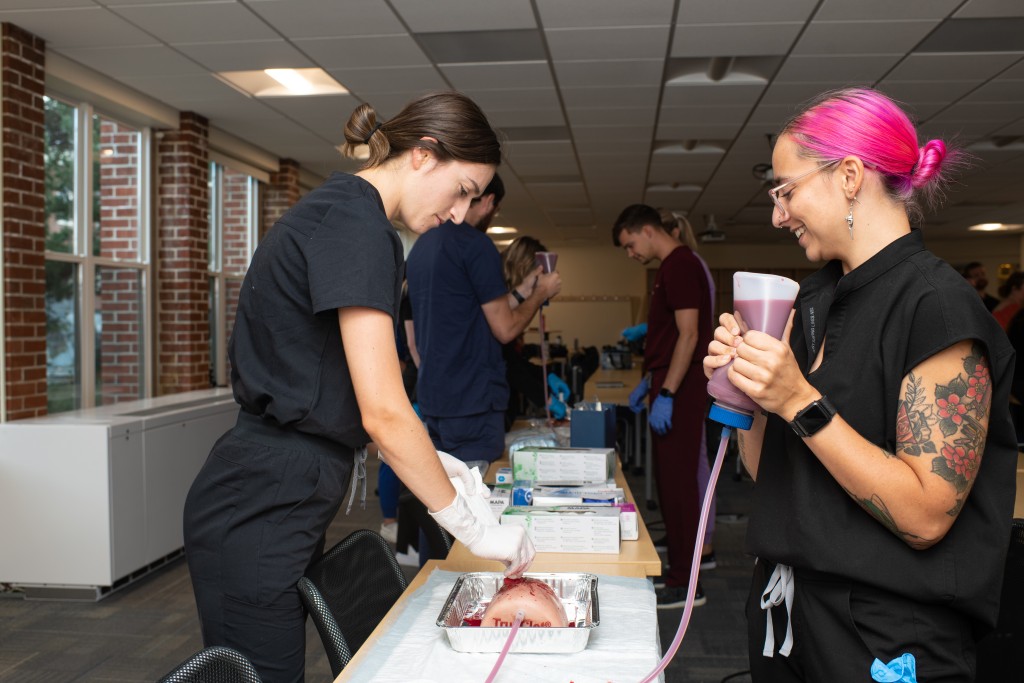From learners to lifesavers, UNE Physician Assistant students take Stop the Bleed training

Emergencies can strike at any moment, but University of New England students are taking additional steps to have the knowledge and skills to respond swiftly and effectively.
As part of the Stop the Bleed (STB) training — a national initiative by the American College of Surgeons — 47 students from UNE’s Master of Science in Physician Assistant program received certification in tourniquets and wound packing techniques to halt potentially fatal mass bleeding.
“The goal is to empower students with crisis management skills that could prove vital in situations where immediate medical attention is required to control severe bleeding,” said Christopher Bates-Withers, M.M.S., PA-C, assistant clinical professor in the Westbrook College of Health Professions, and STB instructor. The training initially started at UNE in 2019 and was reintroduced this August by requests from second-year physician assistant (PA) students.
In the STB training, the PA students learned skills such as wound packing, applying tourniquets, and administering direct pressure. STB mirrors the success of community-based initiatives like CPR training, where quick and effective interventions have contributed to saving lives.
According to the Maine Center for Disease Control and Prevention, 40% of Maine residents live in one of Maine’s 11 rural counties and are subject to longer emergency response times. Bates-Withers said this program increases the chance of a life being saved.
“The more people that we have out in the community who have this training, the greater the likelihood there is that there's someone in the right place at the right time,” he said.
Ashley Roy, B.S. ’22 (Medical Biology), a second-year PA student from Pomfret, Connecticut, said STB makes her a more prepared medical professional and someone the community can look to in an emergency.
“You never know when you're going to encounter an emergency situation," Roy said. "By going through this training, we’re better prepared to face the unexpected and provide immediate care that can save lives."
The training uses realistic wound simulators designed to replicate the physiological response of severe bleeding. These simulators mimic various injury scenarios, including large lacerations and gunshot wounds.
“With the capability to bleed and respond to direct pressure and wound packing, these simulators offer students a lifelike experience that closely resembles real patient situations,” Bates-Withers said. “Witnessing and participating in real-life simulations exposes students to the urgency and gravity of trauma situations.”
Roy said that it showed her the critical nature of immediate interventions and the challenges health care providers face when dealing with life-threatening injuries such as estimating and stopping blood loss.
“The amount of pressure you need to apply to a tourniquet in a tactile sense is so different than what you think it would be — you really need to use a lot of pressure and a lot of force,” she said, noting that the training is applicable to various scenarios including industrial incidents and wilderness injuries.
"UNE is creating well-rounded health care providers,” Roy said. “Everyone should have this skillset — even if you’re not working in emergency health care, you can better help the community.”

